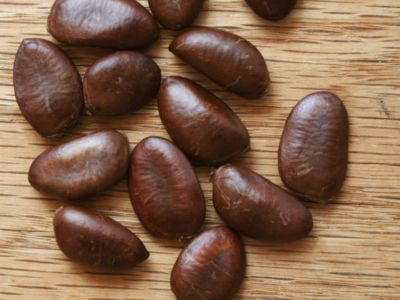Can You Grow a Pawpaw Tree from Seed?
If you are seeking instant gratification and hoping to immediately enjoy its fruits, then purchasing a growing rootstock cloned pawpaw tree may be the best option for you. When growing pawpaw trees from seed, the more pertinent question is when to sow pawpaw seeds, rather than how to plant pawpaw tree seeds. Most gardeners have heard the old Chinese proverb, “the best time to plant a tree was 20 years ago.” While 20 years may be a little excessive, many fruit trees, pawpaw included, do not bear any fruit for many years. When planted from seed, pawpaw trees usually do not produce their fruits for five to eight years. Growing pawpaws from seed is an exercise in patience, as the seeds are slow to germinate and require special care. In the wild, pawpaw trees naturally grow as understory trees. This is because germinating seeds and young seedlings of pawpaw are extremely sensitive, and even killed by direct sunlight. To successfully grow pawpaws from seed, you will need to provide them with some shade for the first year or two.
How to Plant Pawpaw Seeds
Even when provided with adequate shade, germinating pawpaw seeds requires a 60 to 100 day period of cold and moist stratification. Seeds are generally sown directly in the ground, or in deep tree containers in late fall after the seeds ripen in fall. Stratification can also be mimicked in a refrigerator at 32 to 40 degrees F. (0-4 C.). For this method, pawpaw seeds should be placed in a Ziploc bag with moist, but not wet, sphagnum moss and sealed. Seeds should be kept in the refrigerator for 70 to 100 days. Once removed from the refrigerator, the seeds can be soaked in warm water for 24 hours to break dormancy, then planted in the ground or in deep containers. Pawpaw seedlings usually sprout a month or two after germination, but aerial growth will be very slow for the first two years as the plant expends most of its energy into root development. Pawpaw trees are hardy in USDA zones 5 through 8. They prefer well-draining, slightly acidic soil in the pH range of 5.5 to 7. In heavy clay or waterlogged soils, pawpaw seedlings will not perform well and may die. Proper drainage is essential for optimal growth. Pawpaw trees also do not transplant well, so it is important to plant pawpaw seeds in a site where they can permanently stay, or in a large enough container where they can grow for some time. Pawpaw seeds, like their fruit, have a very short shelf life. Seeds should never be stored by drying or freezing. In just three days of drying, pawpaw seeds can lose about 20% of their viability. Pawpaw seeds ripen in the fall (September to October) and are usually removed from the fruit, washed, and used immediately for seed propagation. When planted in autumn, pawpaw seeds usually germinate and produce shoots in the summer of the following year.
